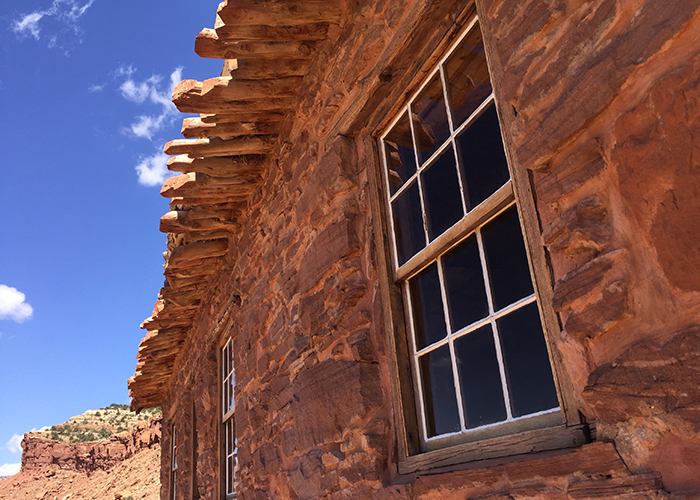 Previous Day |
St. George, UT → Pipe Spring NM → Las Vegas, NV 357.0 mi (574.5 km) |
 More 2018 Adventures |
After my birthday festivities in Las Vegas, I’ve moved on to another strip, the Arizona Strip! This stretch of land connecting Utah and Arizona is home to some spectacular scenery at a cost of unfathomable heartbreak! In short, it would be a harsh morning after!
I started the day north of the strip by paying my respects at a dark corner of Utah history. Here at Mountain Meadows, about thirty miles north of St. George, something truly horrible happened in September of 1857!
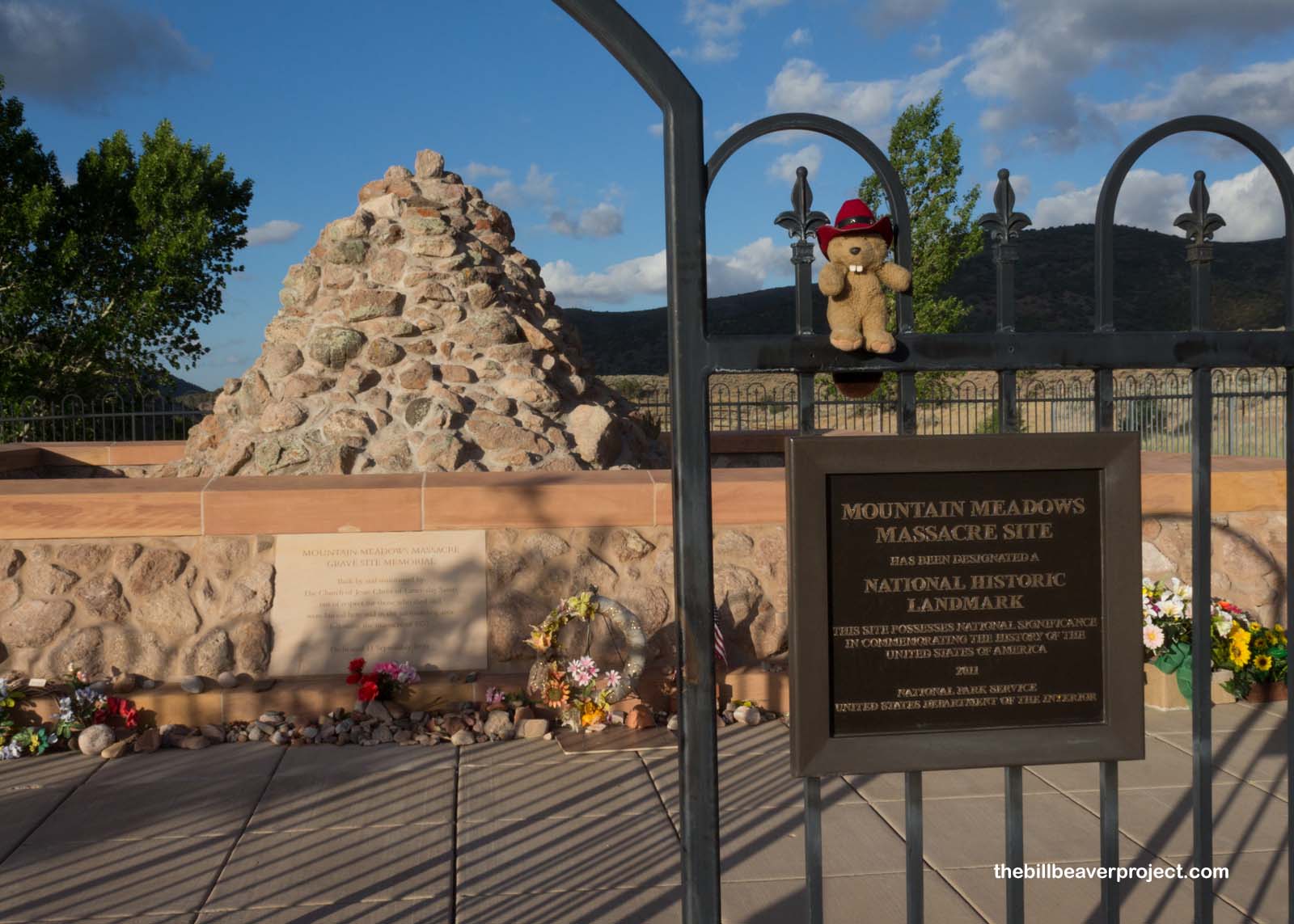 |
A wagon train from Arkansas, led by Captains John Baker and Alexander Fancher, was passing through these mountains en route to California when they were attacked by Mormon militiamen and hired Paiute warriors! After four days of fighting, ten emigrants had been killed, but they had otherwise successfully defended their train. The Mormon militia entered the camp under the white flag of truce, convinced the emigrants that hostilities were ending, and after the emigrants had laid down their arms, massacred 123 people and left them to the vultures! Even today, you can almost hear their screams in the rushing winds.
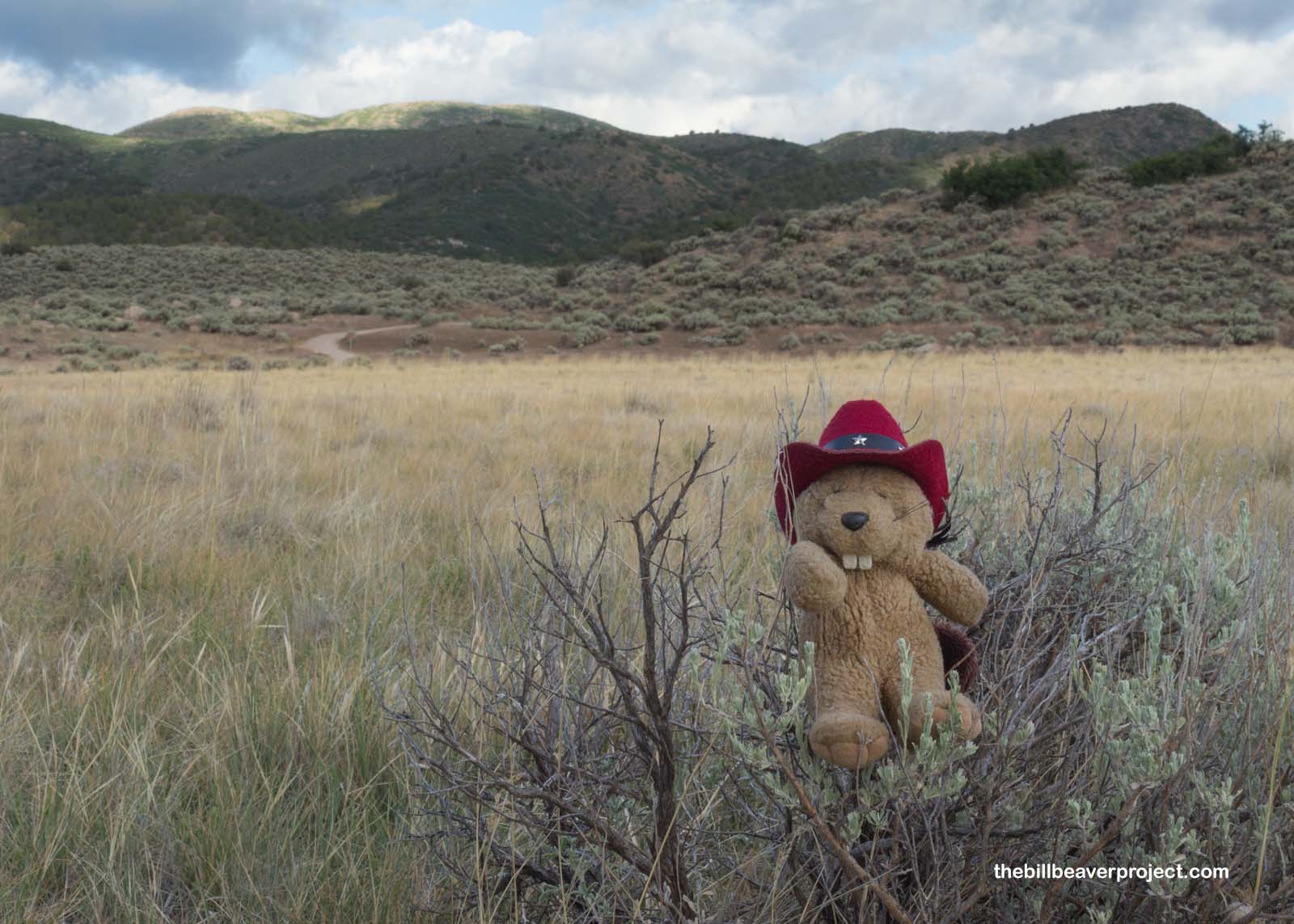 |
The surviving seventeen children were taken away to live with local families, including the families of the murderers. It’s due to their stories that we know what happened in this remote mountain meadow. Two years later, the US Army arrived to investigate, and buried as many of the bones as they could. They’ve since been taken from this place and back to their native Arkansas soil. Seventeen years later, a grand jury indicted nine of the 50 militiamen involved, but only John D. Lee was convicted. He was brought back to this site and shot on March 23, 1877.
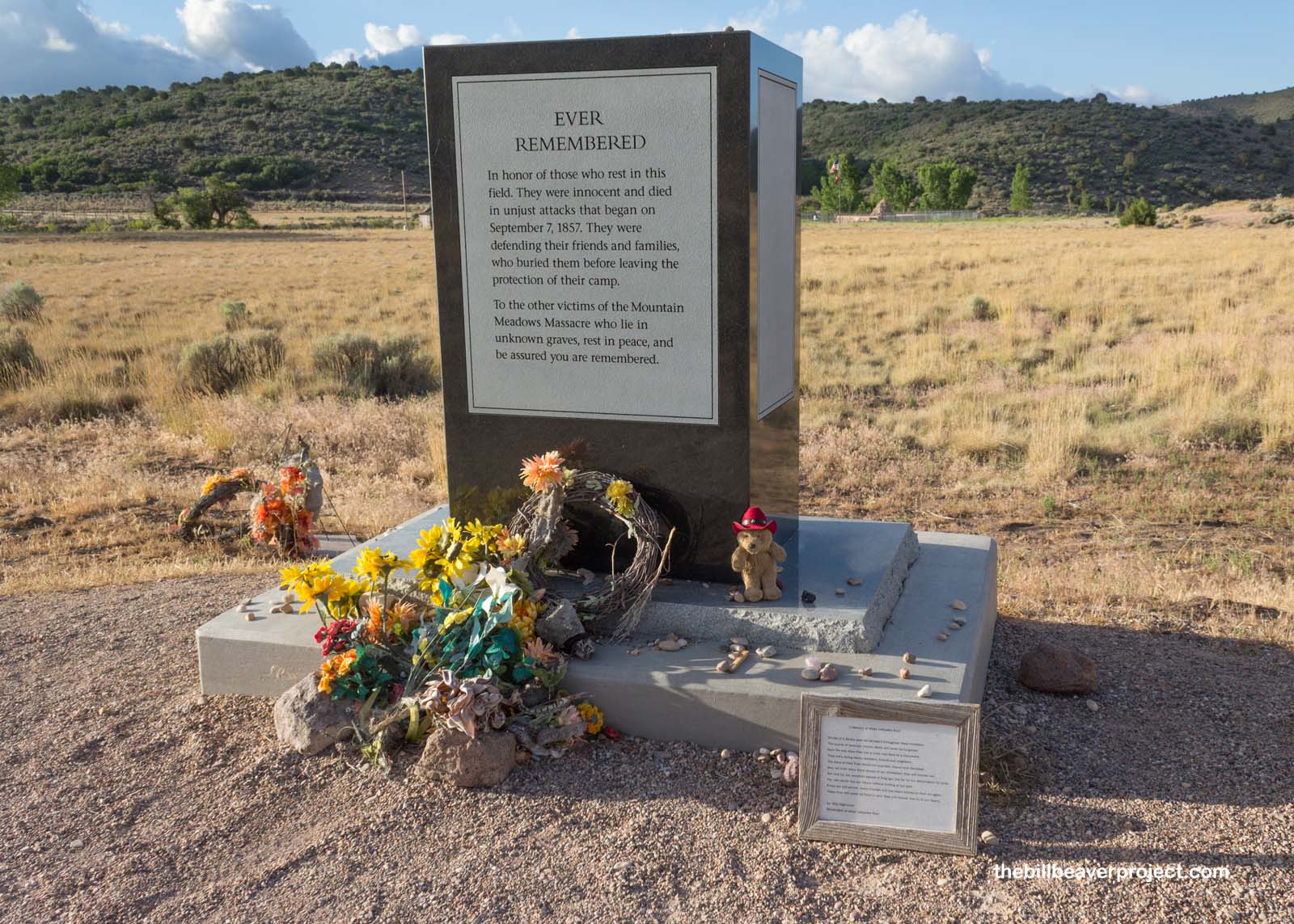 |
This dark tale comes from a time in Mormon history before Utah’s statehood when the US Government saw the founding of Utah territory as a Mormon colony as treasonous. The US Army was already marching on Utah when the Massacre happened, and as I learned across state lines at Pipe Spring National Monument, Mormon settlers across Utah territory and into Arizona were already on edge!
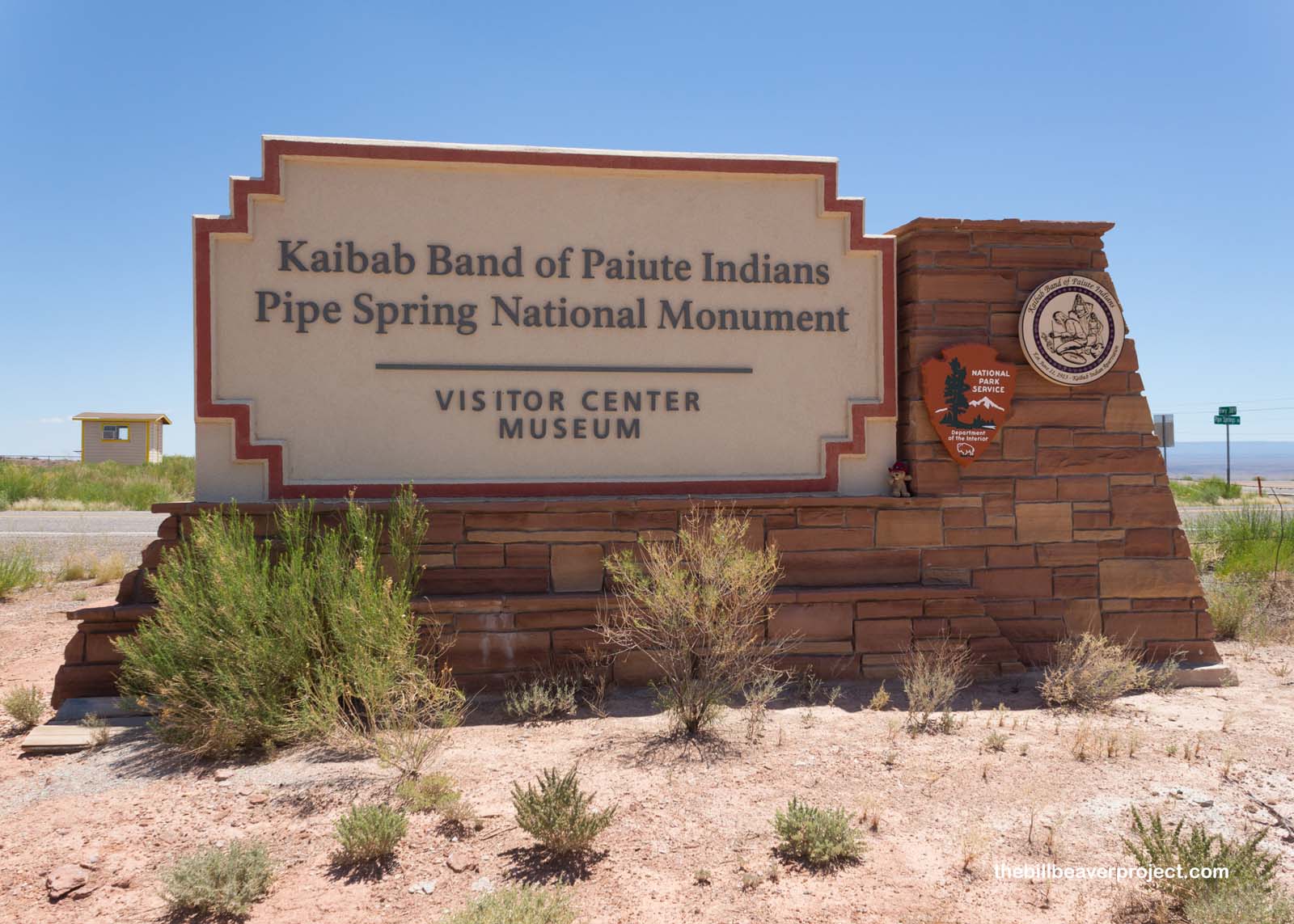 |
Before all of this happened, the Arizona strip was a lush grassland, home to the Kaibab Paiute tribe. Here, they built their kahn shelters and grew corn, beans, and squash, and hunted for desert animals, as they had for thousands of years!
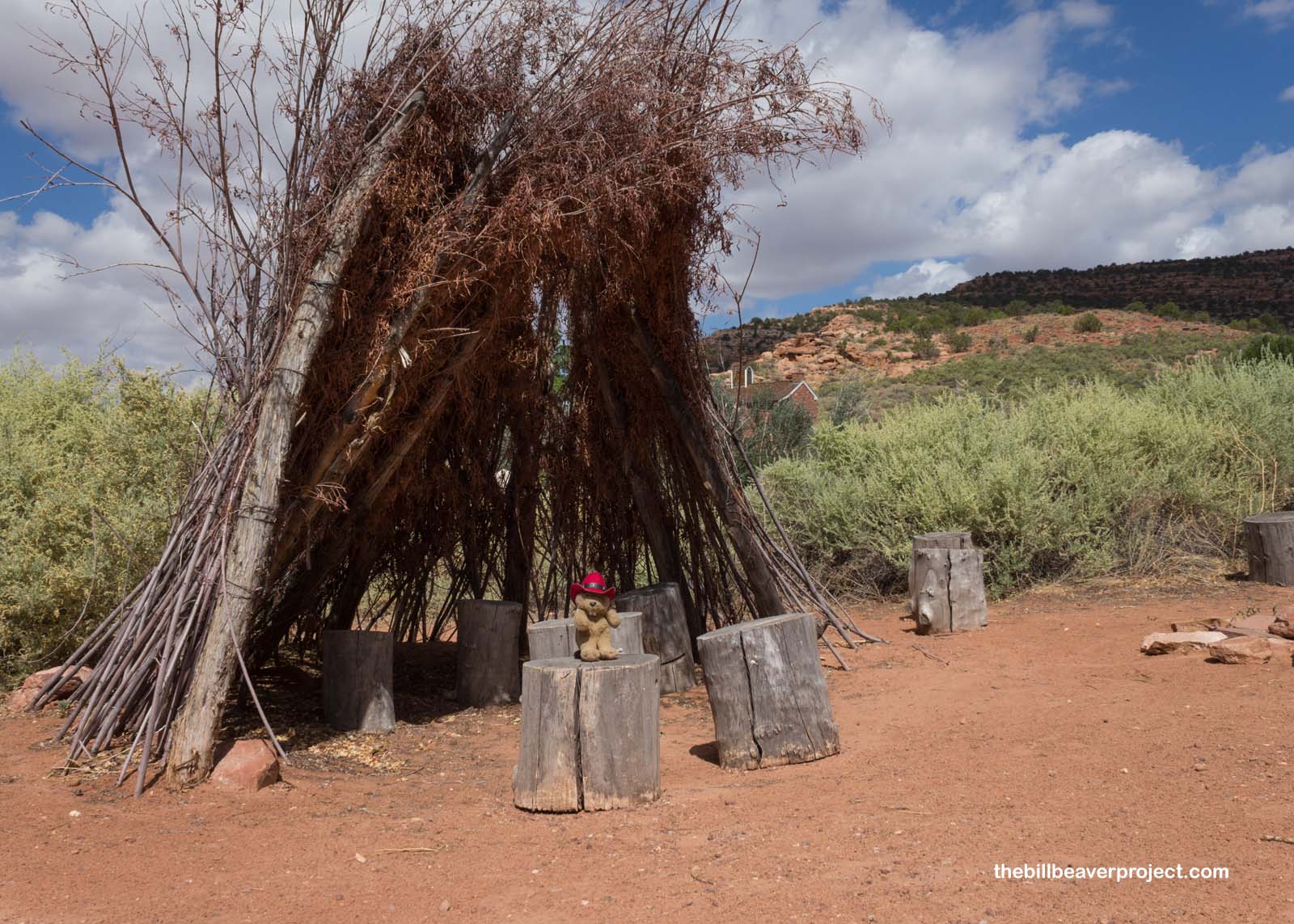 |
This natural spring, which they called Matungwa’va, made that possible. Formed from melting snowfall that had seeped through Kayenta sandstone until it hit Moenkapi shale and reemerged, this spring provided a year-round supply of clean drinking water, not to mention water for crops and a convenient lure for the animals the Paiute hunted for food.
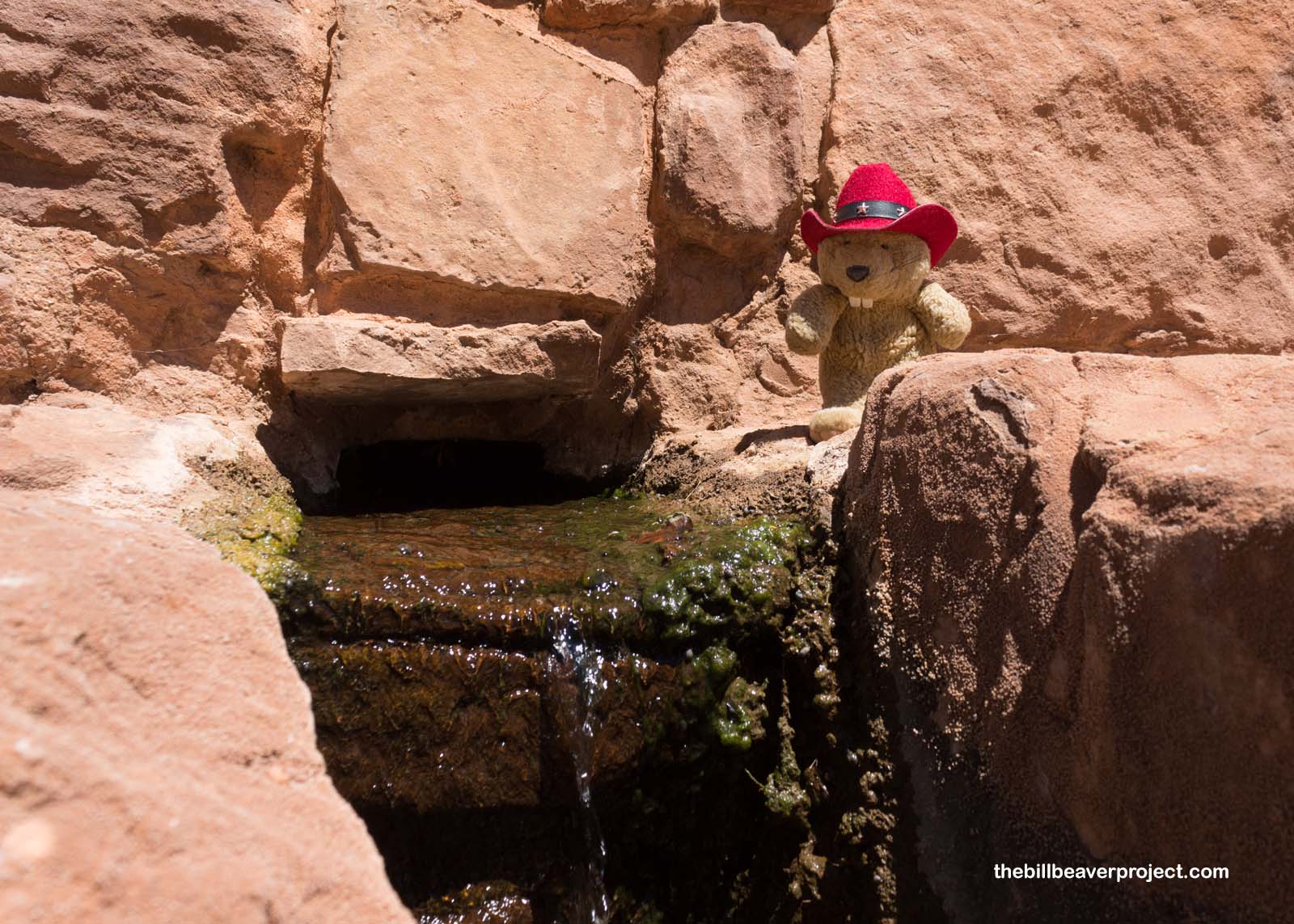 |
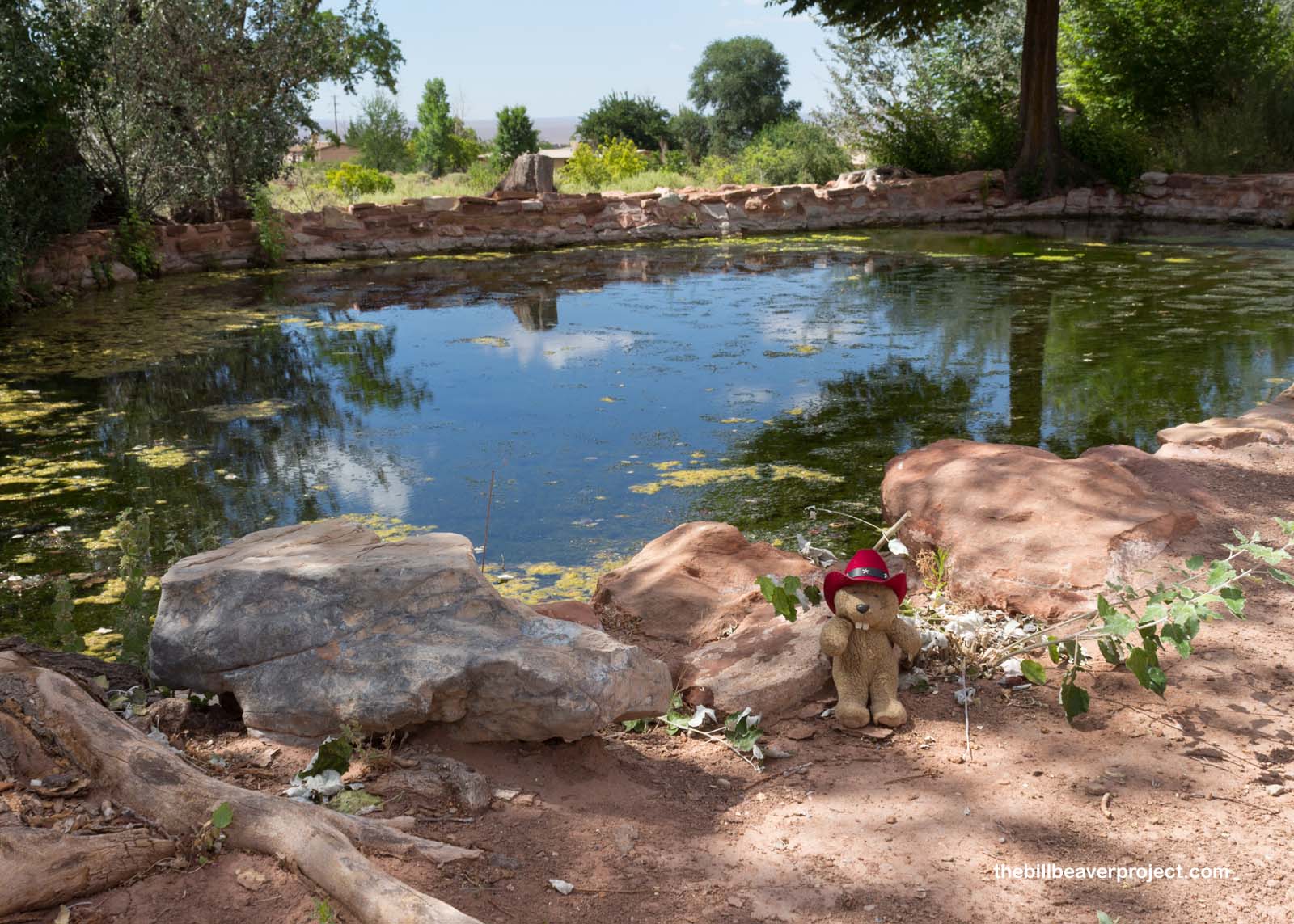 |
As all Native American tribes would eventually discover, this lifestyle was doomed once European settlers arrived on the scene. First came the Dominguez-Escalante expedition in 1776, searching for a route from Santa Fe to the California missions. They opened up a trade in Native American slaves that lasted for a hundred years. When the Mormons finally arrived in the 1840s, they were not as keen on enslaving or killing the Native Americans, believing they were actually descended from the Lost Tribe of Israel. Instead, the Mormons treated them as lost children and, in the case of Pipe Spring, built a fort on top of the Kaibab Paiute’s chief water supply.
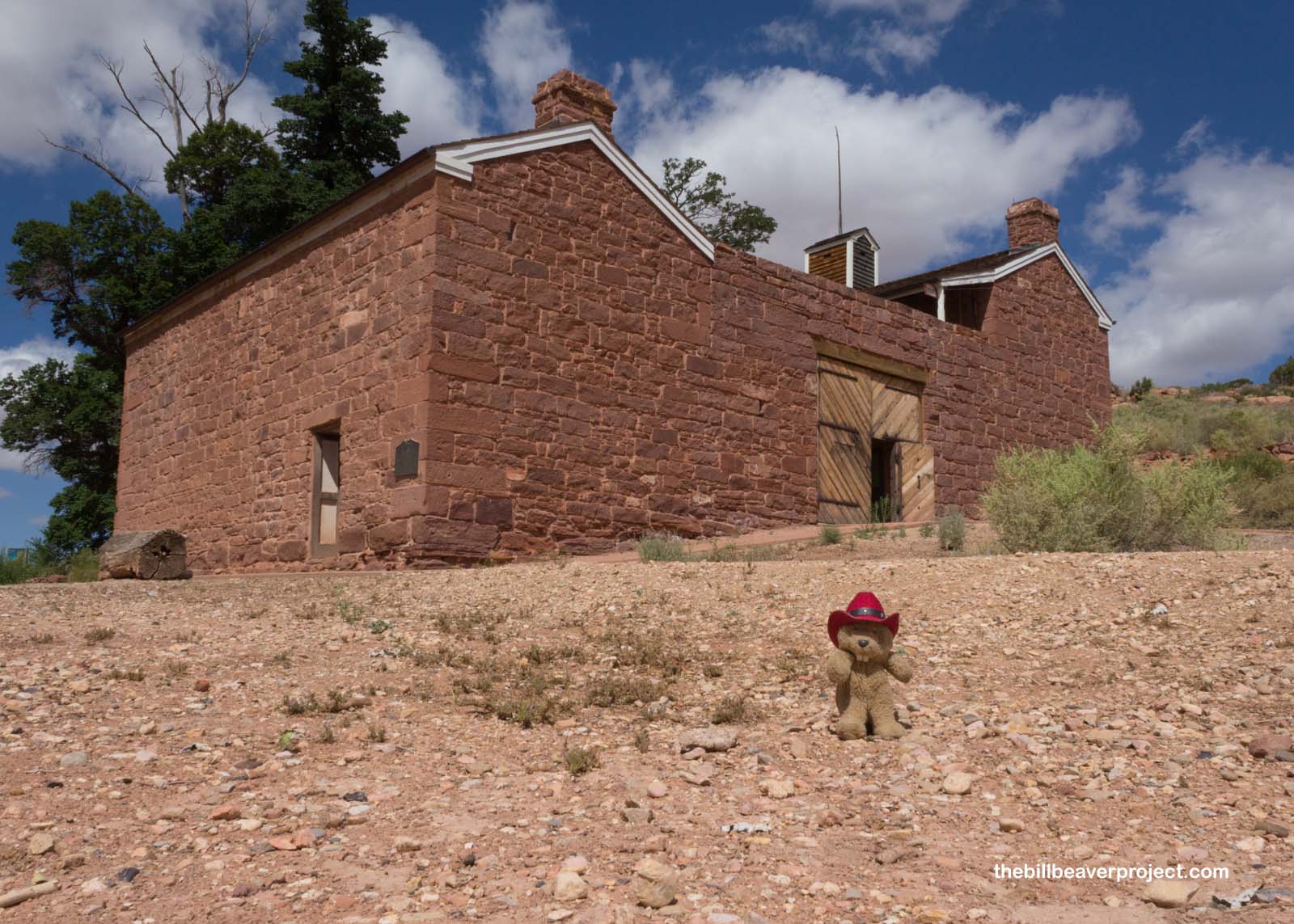 |
This came after years of Mormon ranchers moving in and staking land claims. When Brigham Young visited the area in 1877, he decided that this would be a great place to keep all the cattle that had been given to him as tithing. So, he bought the land and appointed Anson P. Winsor to manage the cattle. It was Mr. Winsor who gave his name to this fort—Winsor Castle—and was the first to guard it, not so much against the angry Paiute but from the ever-present threat of US Government intervention. After all, Mr. Young thought that this was still within Utah Territory, not realizing it was actually eight miles into in Arizona!
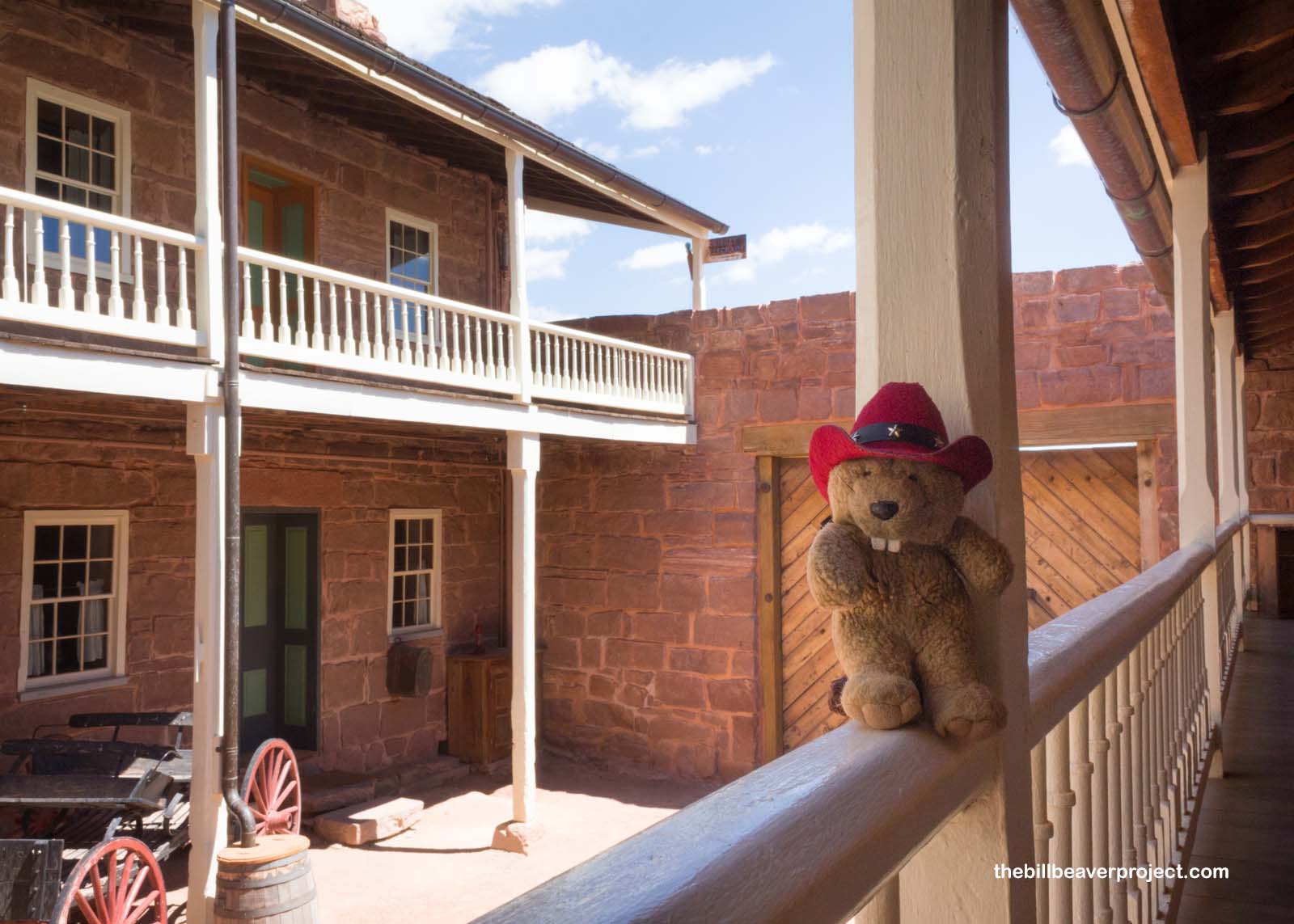 |
I arrived early enough to be the only one on a private tour of Winsor Castle with Ranger Karen! She talked about how Pipe Spring was not only a dumping ground for church cattle but also for church wives! Due to the US laws outlawing polygamy, some Mormon men would hide their extra wives here to tend the house, raise children, and process milk while they saved face elsewhere. Much of the inside has been kept intact, from the original stove to the tea cups with special built-in mustache guards to keep the men’s face caterpillars dry while they drank tea!
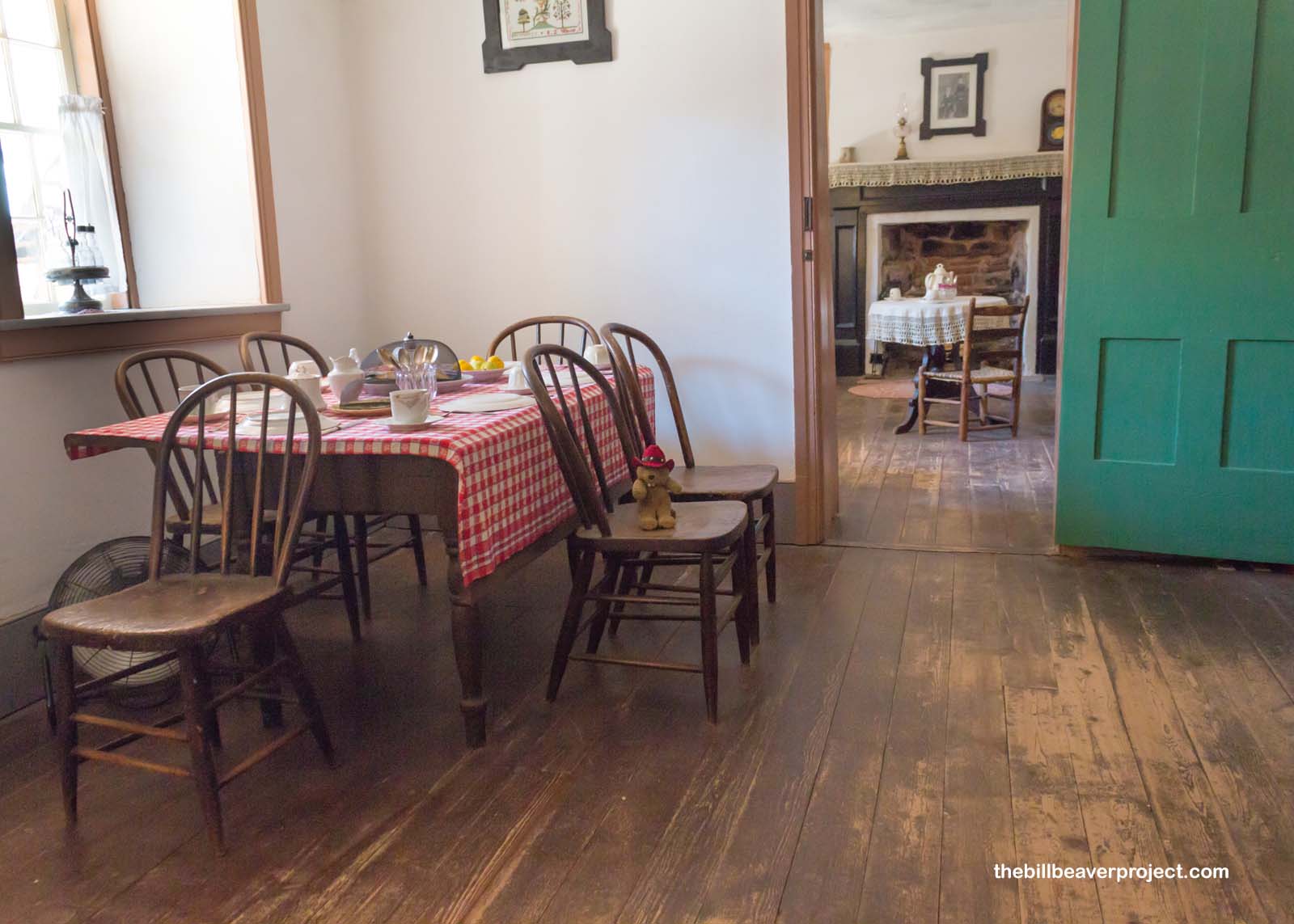 |
Though remote and far-flung, this site was well connected by the Deseret Telegraph! Reaching Pipe Spring in 1871, this was Arizona’s first telegraph system, part of a vast network connecting Mormon outposts to Salt Lake City. One girl would be assigned to monitor the telegraph, which meant she had to stay in the telegraph room all day waiting to record any signals. It was a thankless job with lots of turnover!
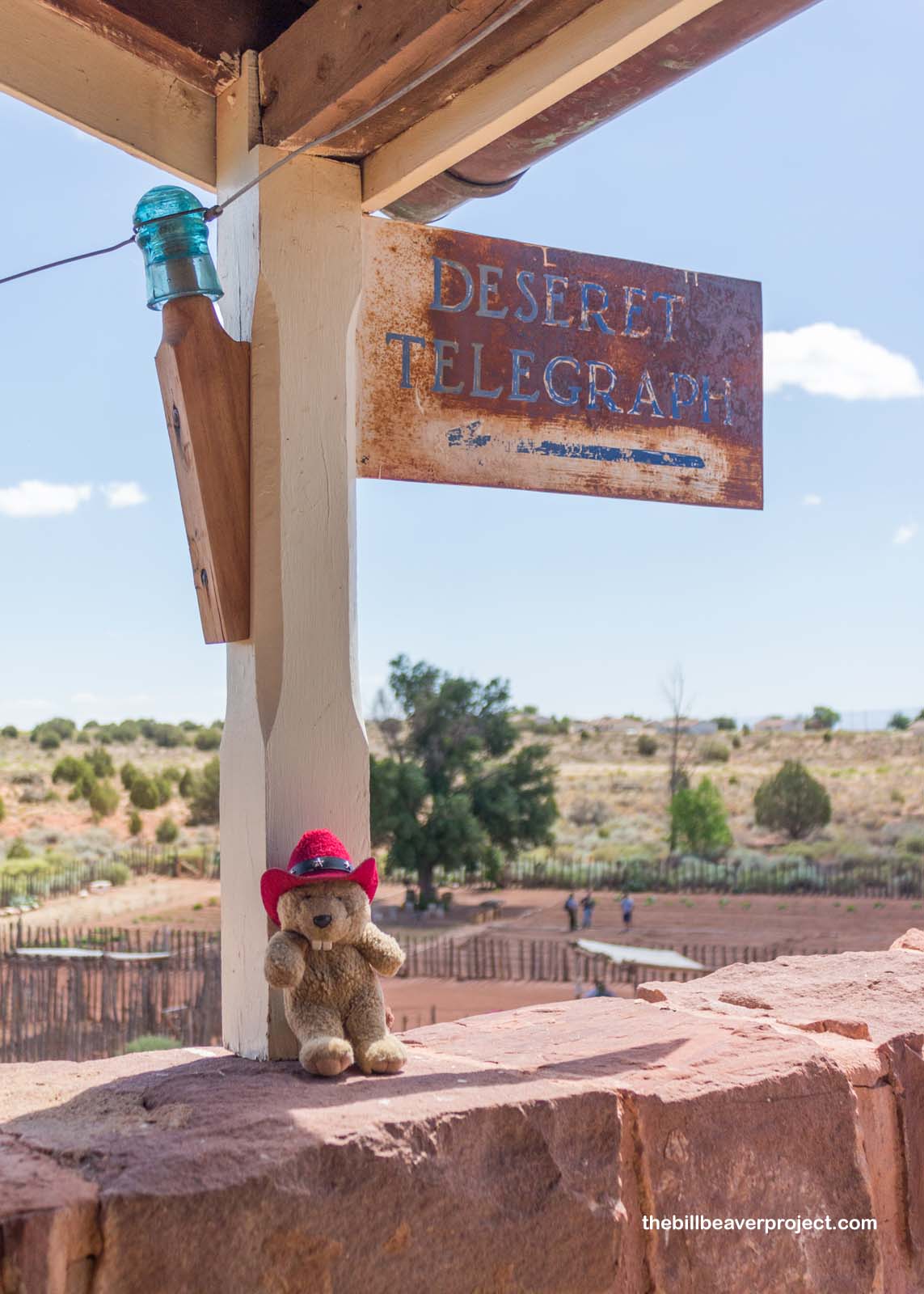 |
But the center of this operation was the cows. The cows drank the water, ate the grass, and churned out milk in exchange. Lots and lots of milk! The women at Pipe Spring processed 40 pounds of butter and 60 pounds of cheese a day that got sold across the southern portion of Utah! They used the water from the spring to cool their processing room and invented all kinds of nifty devices to store and process milk products!
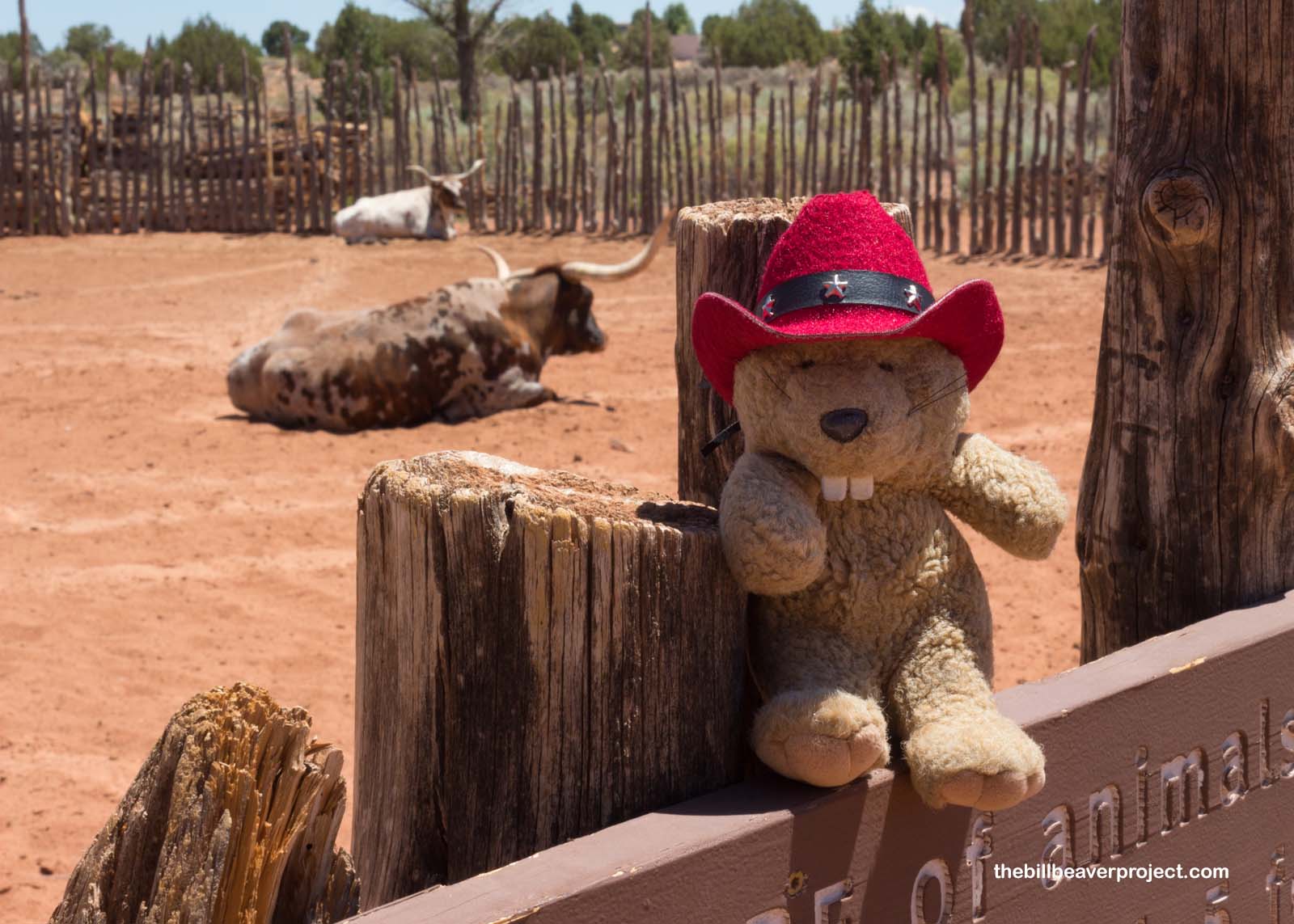 |
All this milk came in from the male ranch hands, who milked 80 to 100 range cows each day. These men lived in small shacks around the property, and it was the men who managed the money and coordinated additional tithing gifts from local ranchers! As I walked up on the trail behind Winsor Castle, I caught a glimpse of just what an impact this enterprise had had on the land!
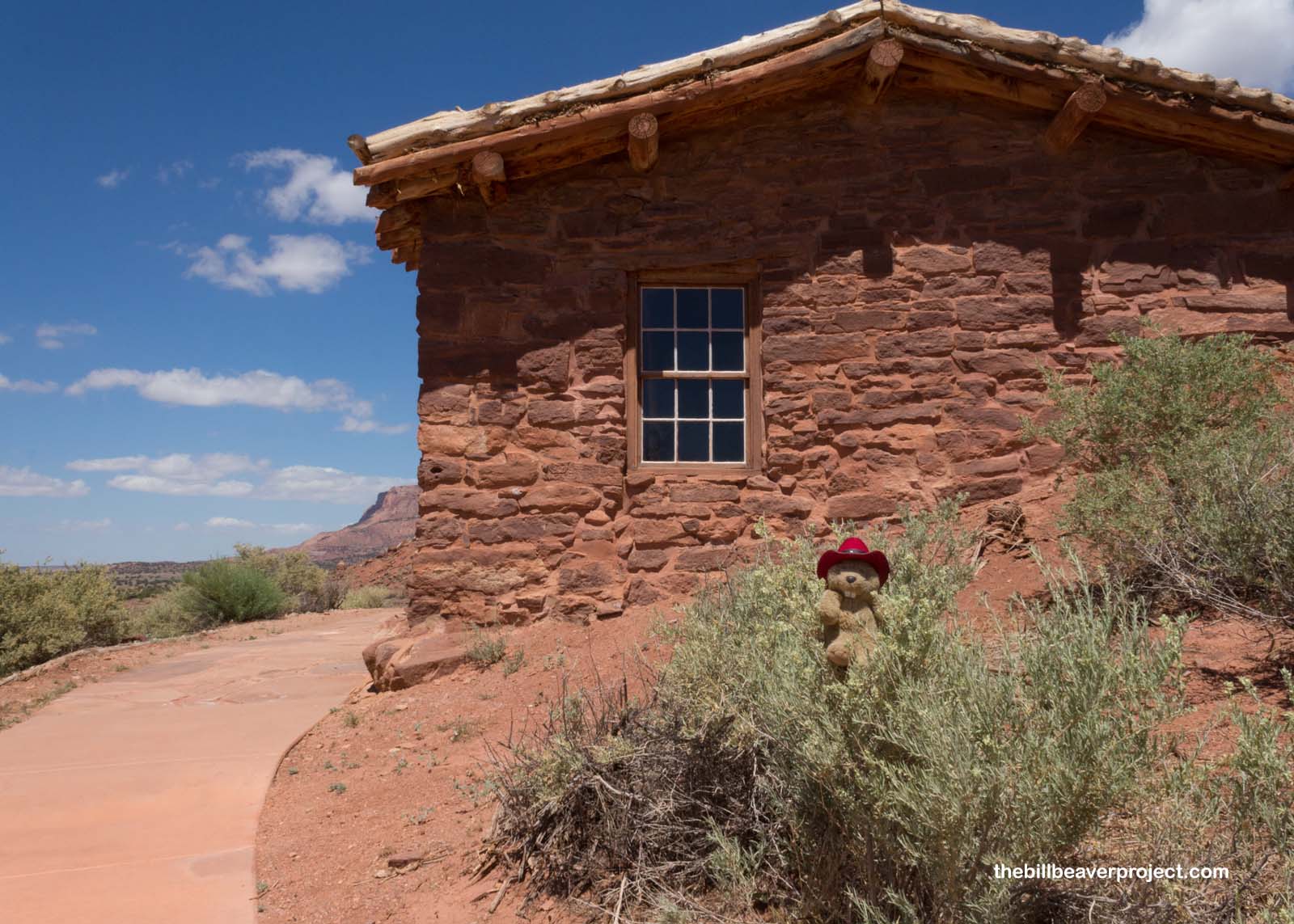 |
Where once grasslands had stretched as far as the eye could see, I could now only see desert: cacti and sagebrush! That’s because the cattle had eaten and trampled all the grass and the water had been welled off by the settlers. The Paiute, without a water source, lost their ability to grow crops and to attract food animals. By 1905, their numbers had dropped from 1,200 to just under one hundred!
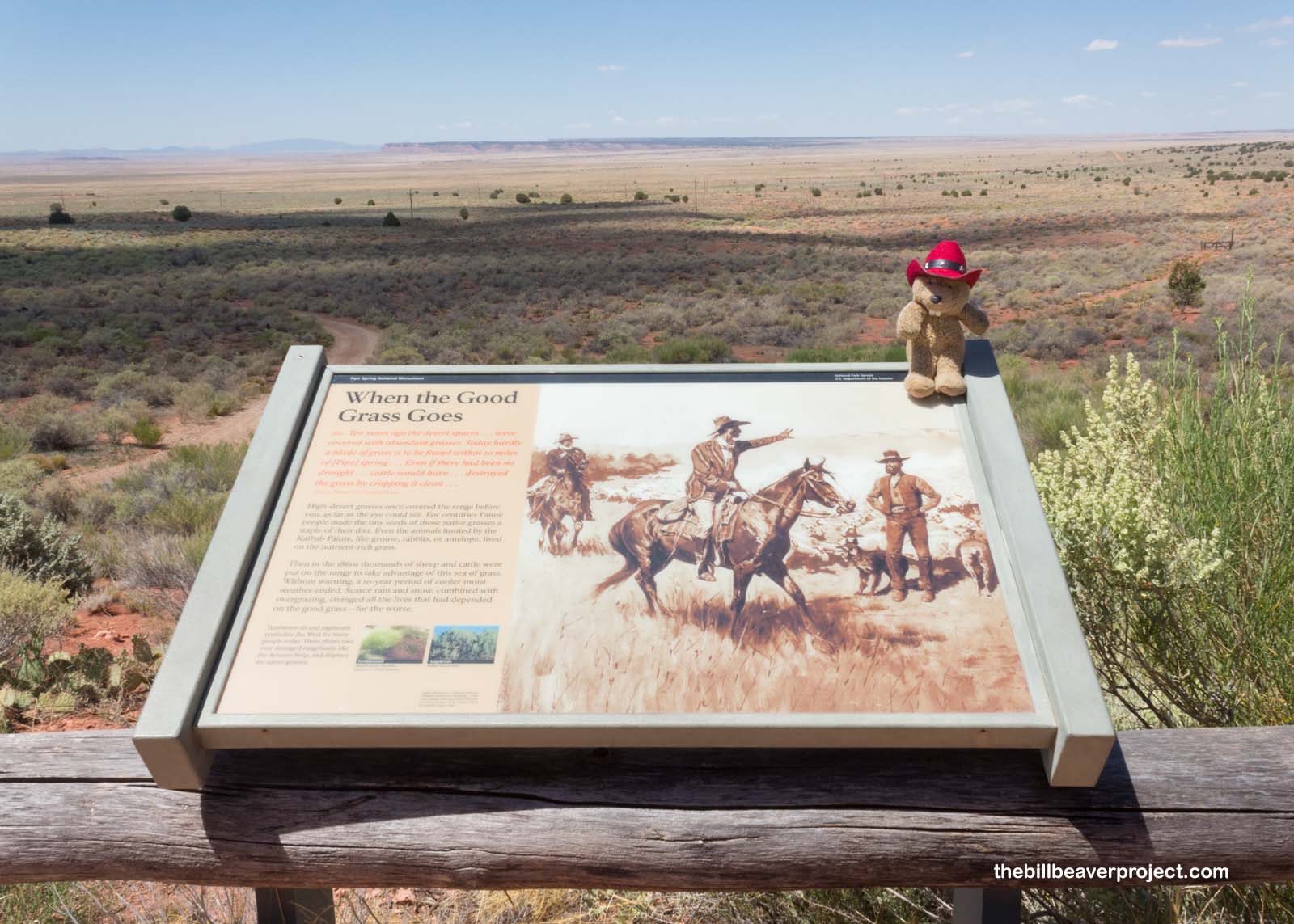 |
Today, this national monument (only a monument because it’s directly between the Grand Canyon and Zion National Park) is jointly managed by the National Park Service and the Kaibab Paiute tribe. In 1907, 138,000 acres of land were set aside for Paiute use, and they’re on the rise again, slowly but surely. Though the native grasses may never return to the Arizona Strip, because the area is still open to grazing, at least one important native feature of this landscape has not been wiped away.
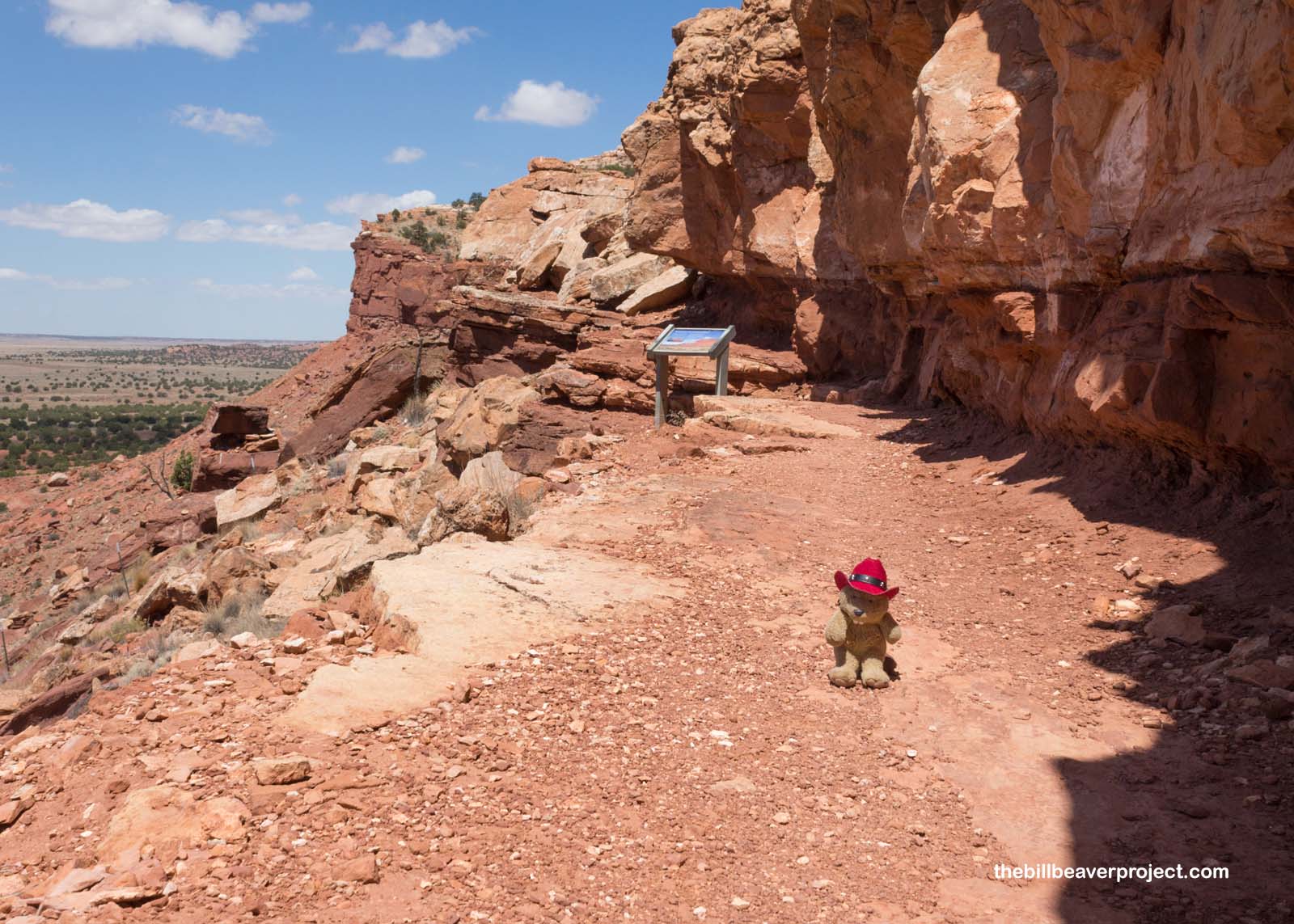 |
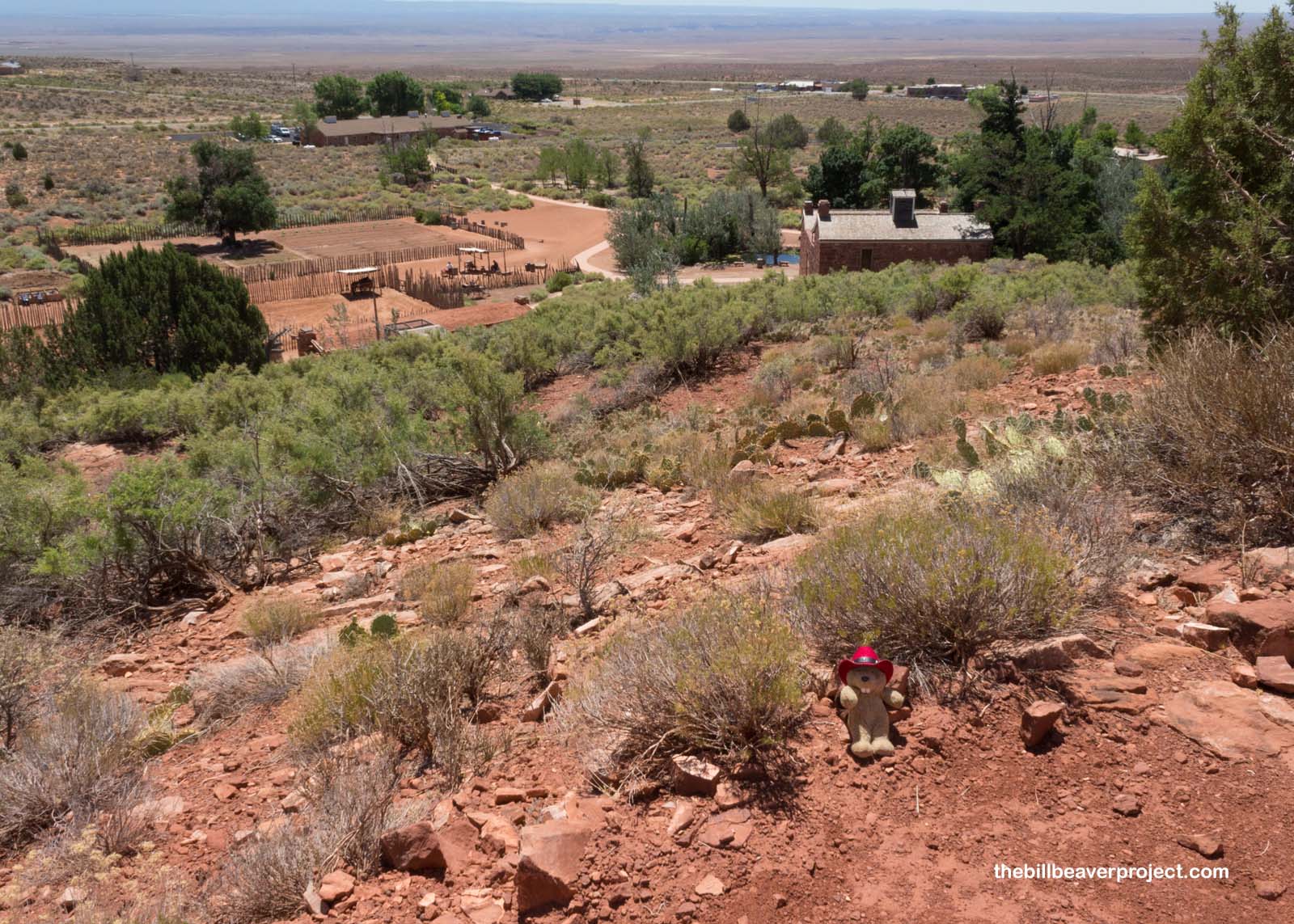 |
It was a heavy day of history; they can’t all be lighthearted I suppose, but history itself is complex like that. It’s important to admire both the ingenuity of the people who made a living in these lands while also being aware of their shortcomings. Their examples are guides for future generations, both of how to persist and how to be conscientious. I’ll take these lessons home with me on the bus to Los Angeles!
Moo-ving on!

 Previous Day |
Total Ground Covered: 640.0 mi (1,029.9 km) |
 More 2018 Adventures |
